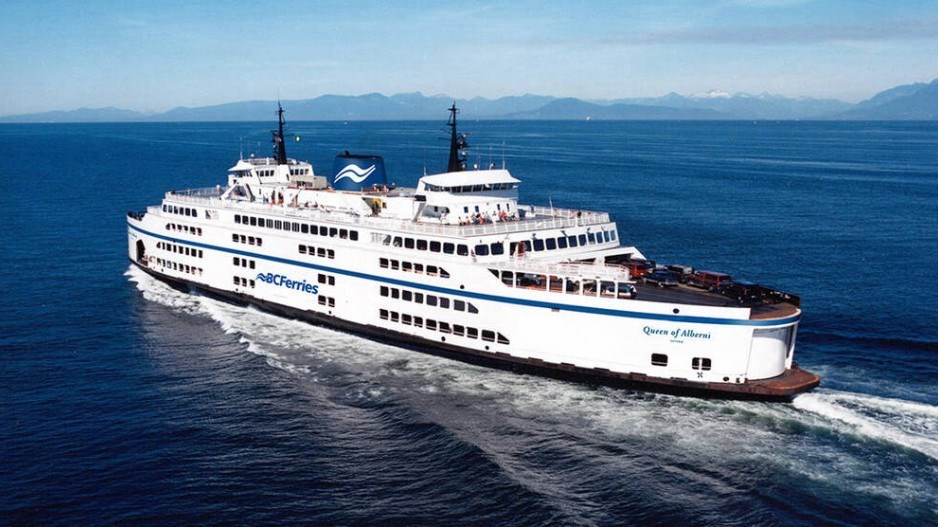BC Ferries' new CEO is wasting little time charting a new course for the much-maligned ferry corporation, this week axing the popular all-you-can-eat buffet service and overhauling the basic way people buy tickets and board the vessels.
Nicolas Jimenez moved from ICBC to BC Ferries in March, but within three months has shot out of the gate with major reforms.
The buffet, perhaps, was not so much of a surprise.
The service, only offered on major routes, had been closed since 2020 due to the pandemic. Even before then, the Pacific Buffet, with its bottomless food features, was running a $1.2 million annual loss for BC Ferries, in addition to tying up as many as seven crew members per vessel to operate.
BC Ferries has been wrestling with crew shortages for more than a year, which have resulted in major cancellations, line-ups and frustrated customers — it could simply not afford either the financial losses or the crew required to restart a service that only 10 per cent of passengers actually used.
The quasi-private monopoly ferry corporation asked passengers this week to fill out a survey on what they would like the buffet space to be replaced with. Many, upset, simply wrote in: Another buffet.
But while the buffet captured most of the public attention, Jimenez was also behind a much larger, more fundamental change to the way BC Ferries operates this week.
The company submitted an application to its regulator, the BC Ferries Commissioner, for permission to begin an ambitious redesign of the way passengers walk and drive onto ferries.
Dubbed a “seamless” terminal check-in process, it seeks to push BC Ferries into a modern age where people can use smartphones, bar codes, automated scanners and other technologies to get onto the ship rather than lining up for printed boarding cards they have to physically hand to attendants.
“The customer experience at the major terminals, whether travelling as a foot passenger or by vehicle, is being negatively impacted by long wait lines for ticket purchasing and redemption, and slow-functioning systems and manual processing,” BC Ferries wrote in its submission.
“Meanwhile, customers have increased expectations with service levels and the efficiency of travel, often based upon their experience with other transportation systems.
“In essence, global trends towards digital interfaces for commerce and travel have highlighted the disconnect between BC Ferries’ online pre-travel planning and reservation capabilities and the terminal onsite manual processing, limited real-time information available and long wait times to check in upon arrival.”
For those driving onto the ferry, it would mean a new “pre-gate” stop where cameras automatically measure the vehicle and read the licence plate to match it to reservations booked online. People who pre-booked would get sent to an express booth.
BC Ferries said the experience would reduce line-ups, as well as cut interaction down to as little as 10 seconds per vehicle. In turn, that would let people with reservations arrive earlier than the current 30-minute pre-sailing cutoff, according to the application.
For foot passengers, the renovations would mean adding “fare gates” at both terminal entrances and boarding gates where passengers who booked on the new BC Ferries app would be able to scan their barcode instead of waiting in line for a ticket agent to print them a hard copy ticket.
This too would dramatically reduce wait times and lineups at terminals, BC Ferries wrote in its application.
Part of the reason for the reforms is BC Ferries’ aging IT infrastructure — which mostly notably crashed during the May long weekend, bringing down the ferries website and app during one of the busiest days of the year.
But another reason is, again, the staffing shortage.
BC Ferries says the average age of its terminal staff is currently 48. More than 16 per cent of workers are eligible for retirement right now, and 49 per cent will retire within four years. Existing employees regularly complain about ancient computers, traffic bottlenecks and customer frustration, the company said in its regulatory filing.
If approved, BC Ferries would pilot the new technologies next year at Duke Point and Tsawwassen, before rolling them out to Swartz Bay, Horseshoe Bay and Departure Bay by 2027.
The estimated cost is not included in BC Ferries’ application, though money may not be a problem. Premier David Eby is a big fan of Jimenez, having worked with him previously to overhaul ICBC into no-fault insurance. The premier already gave BC Ferries $500 million earlier this year.
The reforms “will enable BC Ferries to prepare for the future and to improve its services performance, brand reputation and overall position within the communities it serves,” read its application.
Very little of what BC Ferries does is popular with the public, including its decision to close the buffet. But when it comes to a fundamental overhaul of the archaic paper-based check-in process, reforms feel like they are long, long overdue.
Rob Shaw has spent more than 15 years covering B.C. politics, now reporting for CHEK News and writing for Glacier Media. He is the co-author of the national bestselling book A Matter of Confidence, host of the weekly podcast Political Capital, and a regular guest on CBC Radio. [email protected]




